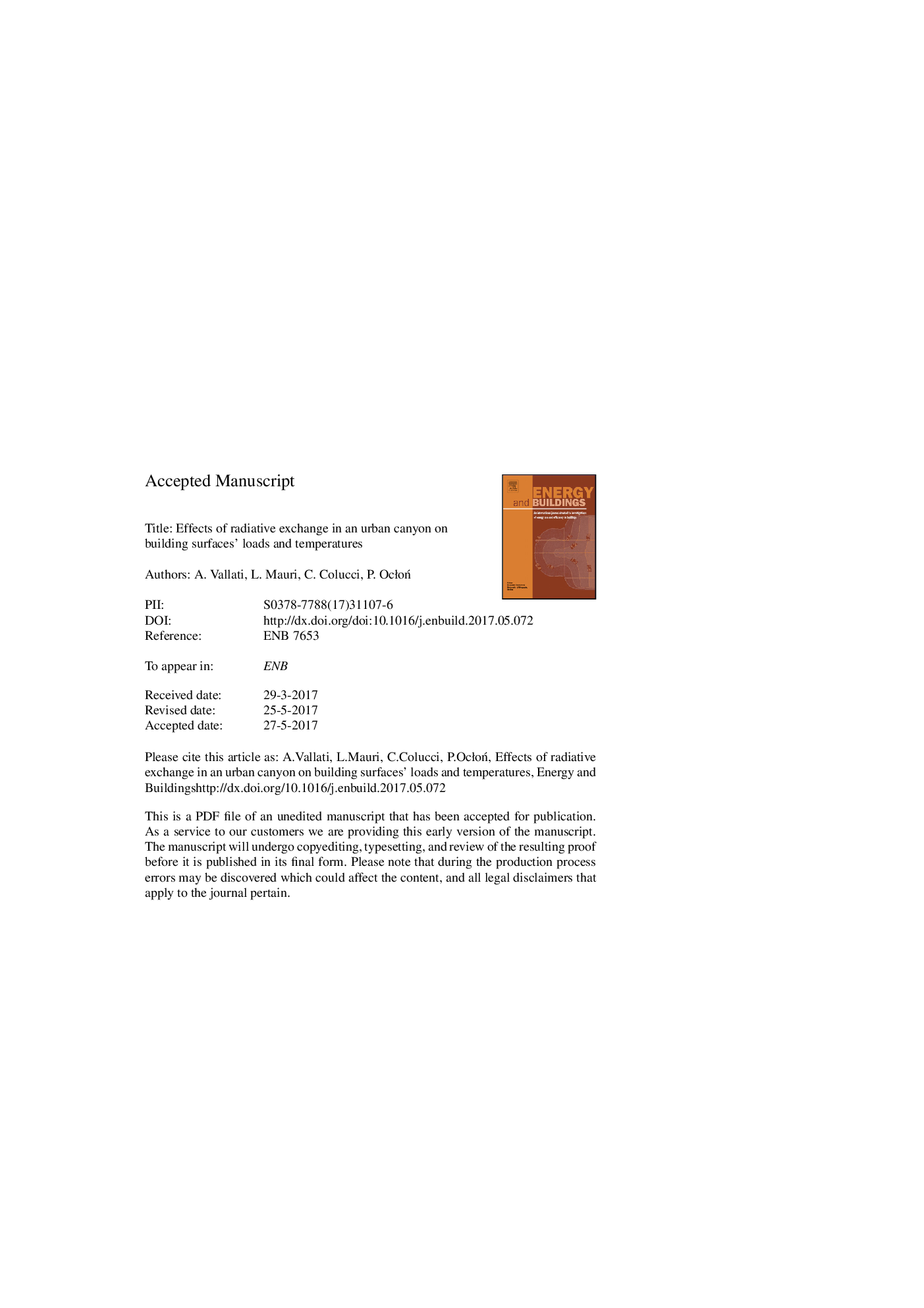| Article ID | Journal | Published Year | Pages | File Type |
|---|---|---|---|---|
| 4919133 | Energy and Buildings | 2017 | 32 Pages |
Abstract
Heat exchange between buildings and the surrounding environment is due to convective and radiative heat flows. In this study a detailed building energy simulation tool (BES) is used to analyze the effect of multiple shortwave and longwave inter-reflections exchanges between neighboring buildings with the main purpose to evaluate their influence on the heat fluxes on the external walls of street canyon buildings. These radiative exchanges modify the canyon microclimate thus influencing space cooling and heating demand of buildings. A TRNSYS canyon model has been created and validated with experimental data [1]. With the proposed model, most of the thermal effects of the urban radiative microclimate can be considered and quantified on street canyon scale. Due to multiple reflections, more solar and thermal radiation remain trapped in an urban fabric so that much more radiation is absorbed in the buildings façades in a street canyon. For this reason, some comparison has been performed between street canyon building (SCB) and stand-alone building (SAB), to account for the inter reflections between the buildings. Energy and thermodynamic studies are performed in a canyon with two orientations (N/S and E/W) and for three aspect ratio (H/WÂ =Â 0.5, 1 and 2). The goal is to characterize how the orientations and geometrical parameter change the inter reflections inside an urban canyon.
Related Topics
Physical Sciences and Engineering
Energy
Renewable Energy, Sustainability and the Environment
Authors
A. Vallati, L. Mauri, C. Colucci, P. OcÅoÅ,
